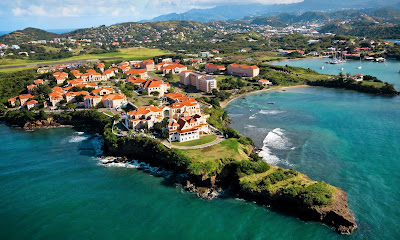As Reported by Steve Rhode in Get Out of Debt Guy, the Federal Trade Commission recently filed an action against St. James School of Medicine, located in the Caribbean. According to the FTC, St. James "deceptively marketed the school's medical license exam test pass rate and residency matches to lure prospective students."
The FTC seeks a $1.2 million judgment against St. James. This judgment, the FTC asserts, will go toward student refunds and cancellation of student debt for aspiring doctors who attended St. James over the past five years.
You may wonder why the FTC asserts jurisdiction over a medical school operating outside the United States. As it turns out, this Caribbean medical school receives federal student-loan money. St. James is hardly in a position to argue that its recruiting activities are none of the FTC's business.
St. James is just one of more than twenty foreign medical schools that receive federal student-loan money. Five of these schools are in the Caribbean, but medical schools in Australia, Canada, Ireland, Israel, and Poland also receive revenue from federal student loans.
Going to a foreign medical school is expensive. According to a U.S. government website, the median cost of completing a medical degree at St. George University's medical school in Grenada is $385,000.
So why not get your medical degree from Ross University in Barbados? The median cost is only $348,000--a bargain!
Why is our federal government subsidizing foreign medical schools? Are there not enough American medical schools to meet the nation's health needs?
If not, why don't we build more medical schools in our own country instead of subsiding medical training in the Caribbean?
Moreover, it can be dangerous for an American to get a foreign medical degree. Why? Because there are more M.D. graduates in the United States than residency programs to train them.
As the New York Times reported recently, more than half of the American residency programs are "unfriendly" toward graduates of foreign medical schools. In fact, only 60 percent of international medical-school graduates get a residency in the United States compared to 94 percent of doctors who graduated from American medical schools.
Most Caribbean medical schools are for-profit institutions, often owned by American investors. Many have very lax admission standards. The admission rate at some Caribbean medical schools is 10 times higher than at American medical programs.
What are the takeaways? First, Americans should be wary of attending a foreign medical school because they run a high risk of not being selected for a residency program that they will need to get a medical license.
Second, Congress should stop subsidizing foreign medical schools, which are horribly expensive and leave many of their graduates with no job prospects.
But the for-profit industry has powerful lobbyists, and Congress is unlikely to act. At the very least, then, Congress should reform the Bankruptcy Code so that jobless graduates of foreign medical schools can discharge their enormous student debt in bankruptcy.


No comments:
Post a Comment